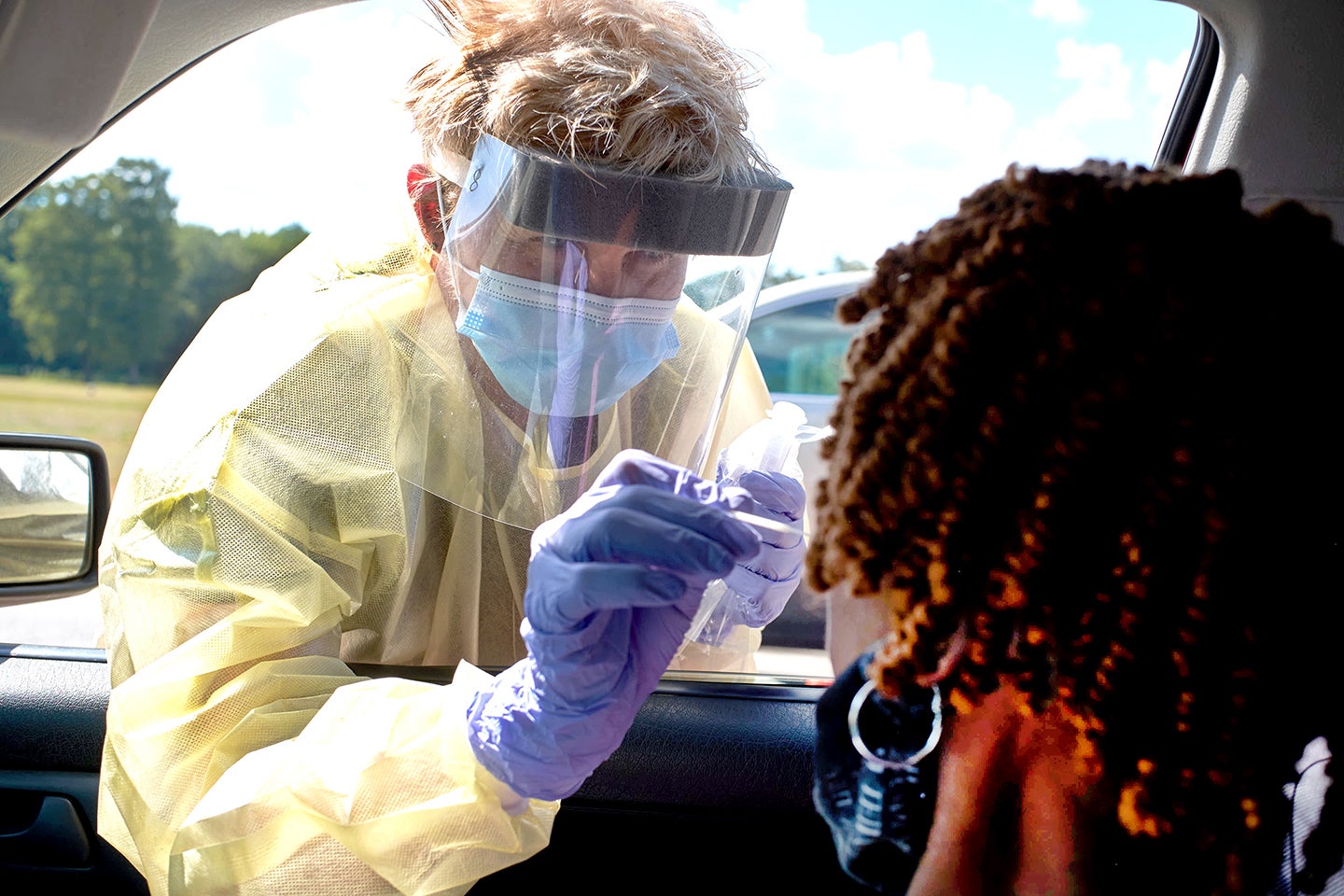COVID-19 tests administered locally
Published 6:20 pm Friday, August 7, 2020
|
Getting your Trinity Audio player ready...
|
AHOSKIE – The North Carolina Department of Health and Human Services (NCDHHS) has scheduled community testing events for COVID-19 at several locations across the state, including Hertford County.
The local event will be held from 4-7 p.m. on Aug. 11, 12, and 13 at Vidant Wellness Center, located at 117 Hertford County High School Road, Ahoskie.
Children and adults will be tested. Call (252) 847-8000 for additional information.
NCDHHS has launched this initiative to increase access to free COVID-19 testing for African American, LatinX/Hispanic and American Indian communities that currently have limited testing sites.

A local nurse administers a COVID-19 test at a recent event held at the Ahoskie Amphitheater. Another local testing site has been announced: Aug. 11-13 at the Vidant Wellness Center in Ahoskie. AA Imaging / Andre Alfred
So far, more than 180 testing events have been coordinated through this initiative, which is being extended into August.
There is no cost to people getting tested. Insurance, if available, will be billed but there are no co-pays or cost-sharing for anyone seeking testing. Those who are uninsured are also tested at no cost.
For an up-to-date list of events, visit the Community Testing Events page of the NCDHHS COVID-19 website. NCDHHS testing events are listed under the name of their coordinating vendor: NCCHCA, Orig3n, Inc or Vidant Health.
People who may not currently have symptoms but may have been exposed to COVID-19 should get tested, especially people from historically marginalized communities, including Latinx/Hispanic, Black/African American, and American Indian populations. A disproportionately high percentage of North Carolina’s confirmed cases of COVID-19 have occurred among historically marginalized populations, and mounting evidence shows the members of these populations experience higher rates of COVID-19 mortality and serious complications.
In addition, testing is a priority for anyone who has symptoms or those who may have been exposed to COVID-19, including:
Anyone who has attended a mass gathering including a protest.
Anyone who works in a setting at higher risk of exposure such as a grocery store, restaurant, gas station, or childcare program.
People who live or work in high-risk settings such as long-term facilities, homeless shelters, correctional facilities or food processing facility.

